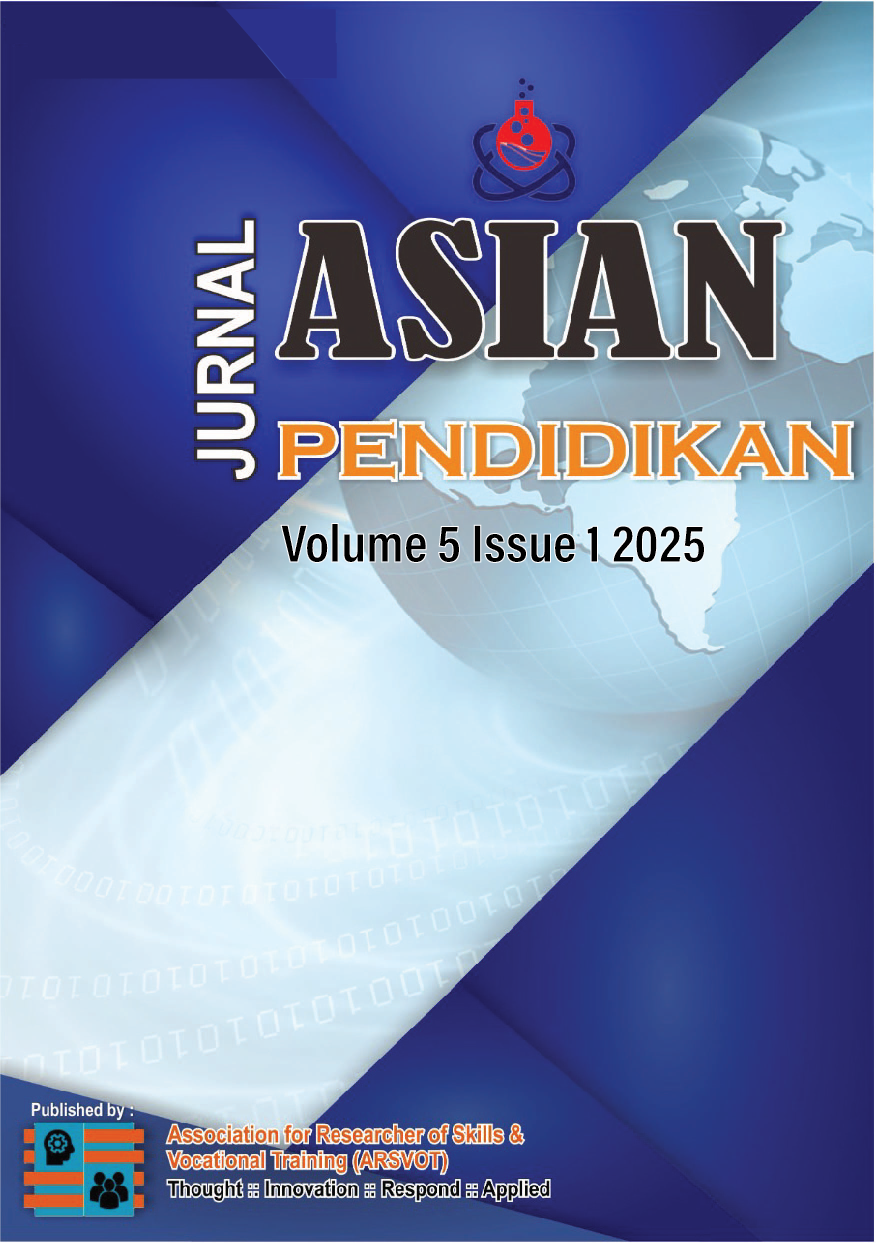Assessing English Language Needs of Chinese Medical Students: Implications for ESP Curriculum Design
DOI:
https://doi.org/10.53797/aspen.v5i1.5.2025Keywords:
English for Medical Purposes (EMP), Needs Analysis, medical students, productive skills, ESP curriculum design, ChinaAbstract
This study investigates the English language needs of medical undergraduates in Guizhou Province, China, with a focus on English for Medical Purposes (EMP). Using a mixed-methods approach, data were collected from 993 junior students through questionnaires, interviews, classroom observations, and pre- and post-tests. Findings reveal that while students demonstrate moderate competence in receptive skills such as listening and reading, they face significant challenges in productive skills, particularly speaking and writing. These difficulties are compounded by limited authentic exposure, exam-oriented instruction, and high levels of language anxiety. Statistical analyses, including repeated-measures ANOVA, confirm writing and speaking as the most urgent areas of need. The study highlights the necessity of developing task-based, scaffolded ESP curricula that prioritize professional communication tasks such as medical documentation, patient interaction, and case presentations. Pedagogical implications include the integration of Communicative Language Teaching (CLT) and Task-Based Language Teaching (TBLT) to enhance pragmatic competence and build learner confidence. The results underscore the importance of aligning EMP instruction with the professional demands of healthcare practice in under-resourced EFL contexts.Downloads
References
Ahmed Alsamadani, H. (2017). Needs analysis in ESP context: Saudi engineering students as a case study. Advances in Language and Literary Studies, 8(6), 58. https://doi.org/10.7575/aiac.alls.v.8n.6p.58
Cenoz, J., & Gorter, D. (2020). Teaching English through pedagogical translanguaging. World Englishes, 39(2), 300–311. https://doi.org/10.1111/weng.12462
Gerchow, L., Burka, L. R., Miner, S., & Squires, A. (2021). Language barriers between nurses and patients: A scoping review. Patient Education and Counseling, 104(3), 534–553. https://doi.org/10.1016/j.pec.2020.09.017
Gong, Y. (Frank), Gao, X. (Andy), Li, M., & Lai, C. (2021). Cultural adaptation challenges and strategies during study abroad: New Zealand students in China. Language, Culture and Curriculum, 34(4), 417–437. https://doi.org/10.1080/07908318.2020.1856129
Hutchinson, T., & Waters, A. (1987). English for Specific Purposes: A learning-centred approach. Cambridge University Press.
Hyland, K. (2002). Specificity revisited: How far should we go now? English for Specific Purposes, 21(4), 385–395. https://doi.org/10.1016/S0889-4906(01)00028-X
Jiang, Z., Wu, H., Cheng, H., Wang, W., Xie, A., & Fitzgerald, S. R. (2021). Twelve tips for teaching medical students online under COVID-19. Medical Education Online, 26(1), 1854066. https://doi.org/10.1080/10872981.2020.1854066
Liu, J. E., Lo, Y. Y., & Lin, A. M. Y. (2020). Translanguaging pedagogy in teaching English for Academic Purposes: Researcher-teacher collaboration as a professional development model. System, 92, 102276. https://doi.org/10.1016/j.system.2020.102276
Nel, N. M., & Krog, S. (2021). Factors influencing the acquisition of Mandarin Chinese as a second additional language focusing on phonetics. Participatory Educational Research, 8(1), Article 1. https://doi.org/10.17275/per.21.1.8.1
Nguyen, H. T. L. (2020). A review of university research development in Vietnam from 1986 to 2019. In P. Le Ha & D. Ba Ngoc (Eds.), Higher Education in Market-Oriented Socialist Vietnam: New Players, Discourses, and Practices (pp. 63–86). Springer. https://doi.org/10.1007/978-3-030-46912-2_4
Pun, J. (2023). Developing an ESP workshop to promote handover practices in nursing communication: A case study of nurses in a bilingual hospital in Hong Kong. English for Specific Purposes, 71, 123–138. https://doi.org/10.1016/j.esp.2023.04.002
Qiu, S., et al. (2022). Multi-sensor information fusion based on machine learning for real applications in human activity recognition: State-of-the-art and research challenges. Information Fusion, 80, 241–265. https://doi.org/10.1016/j.inffus.2021.11.006
Ramadan Elbaioumi Shaddad, A., & Jember, B. (2024). A step toward effective language learning: an insight into the impacts of feedback-supported tasks and peer-work activities on learners’ engagement, self-esteem, and language growth. Asian-Pacific Journal of Second and Foreign Language Education, 9(1), 39.
Reynolds, B. L., Zhang, X., & Ding, C. (2023). A mixed-methods study of English vocabulary for medical purposes: Medical students’ needs, difficulties, and strategies. Applied Linguistics Review, 14(3), 643–678. https://doi.org/10.1515/applirev-2020-0119[21]. Sun, W., & Rong, X. L. (2021). English education reform in Asian countries. In Oxford Research Encyclopedia of Education. https://doi.org/10.1093/acrefore/9780190264093.013.838
Riadil, I. G. (2020). A study of students’ perception: Identifying EFL learners’ problems in speaking skill. IJELR: International Journal of Education, Language, and Religion, 2(1), Article 1. https://doi.org/10.35308/ijelr.v2i1.2256
Tang, Y. M., Chen, P. C., Law, K. M. Y., Wu, C. H., Lau, Y., Guan, J., He, D., & Ho, G. T. S. (2021). Comparative analysis of student’s live online learning readiness during the coronavirus (COVID-19) pandemic in the higher education sector. Computers & Education, 168, 104211. https://doi.org/10.1016/j.compedu.2021.104211
Wang, W. (2022). Reflections on online EFL teaching during COVID-19: A case study of Yunnan University in China. Journal of NELTA, 27(1–2), Article 1–2. https://doi.org/10.3126/nelta.v27i1-2.53190
Wittenberg, E., et al. (2021). Opportunities to improve COVID-19 provider communication resources: A systematic review. Patient Education and Counseling, 104(3), 438–451. https://doi.org/10.1016/j.pec.2020.12.031
Ye, X. (2023). Code-switching in Chinese junior secondary school EFL classes: Functions and student preferences. The Language Learning Journal, 51(3), 263–278. https://doi.org/10.1080/09571736.2021.1998196
Zhao, J.-H., Panjaburee, P., Hwang, G.-J., & Wongkia, W. (2023). Effects of a self-regulated-based gamified virtual reality system on students’ English learning performance and affection. Interactive Learning Environments, 0(0), 1–28. https://doi.org/10.1080/104948
Downloads
Published
How to Cite
Issue
Section
License
Copyright (c) 2025 Alias Juan Zhou, Nalini Arumugam

This work is licensed under a Creative Commons Attribution-NonCommercial-ShareAlike 4.0 International License.




